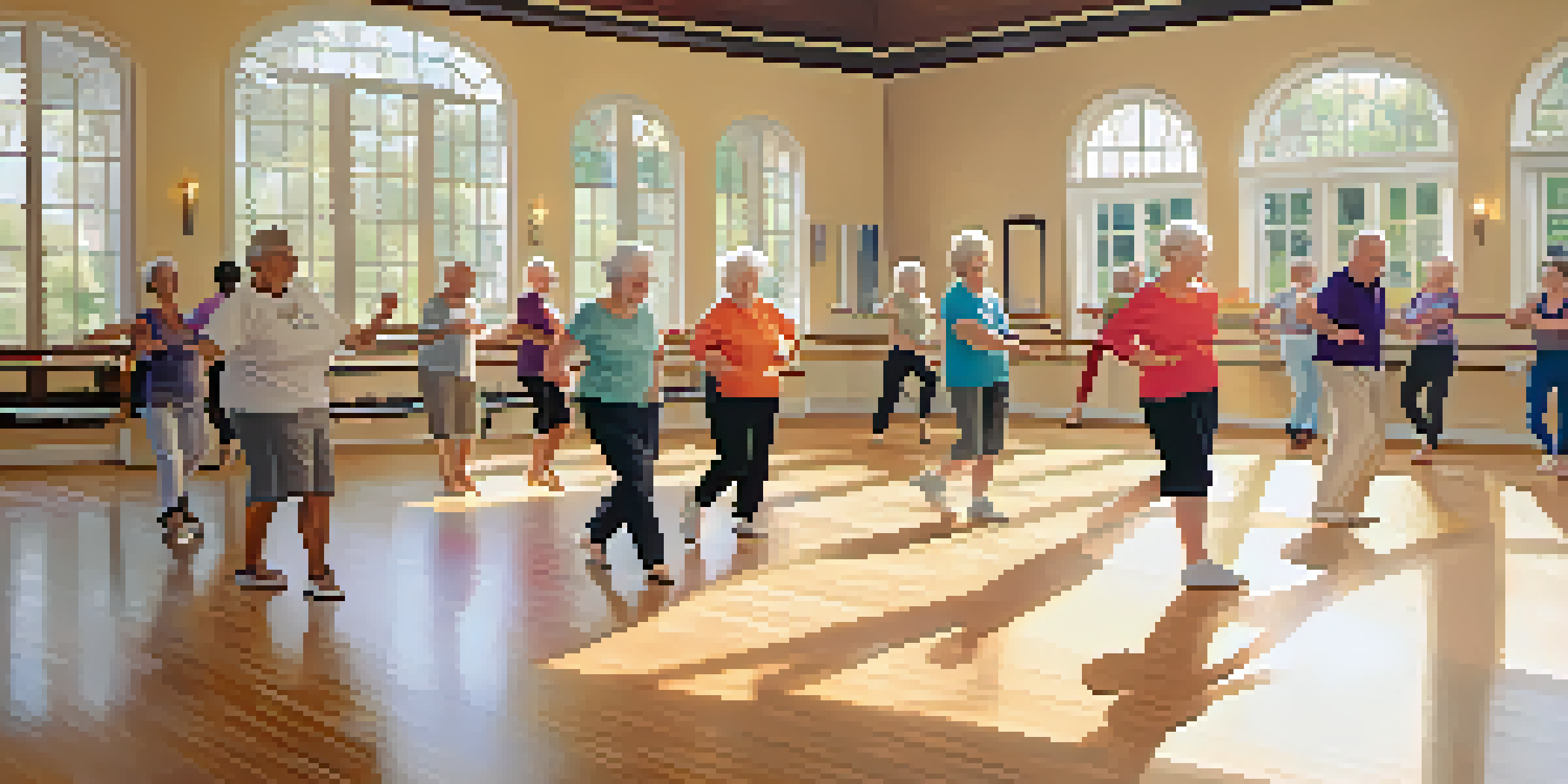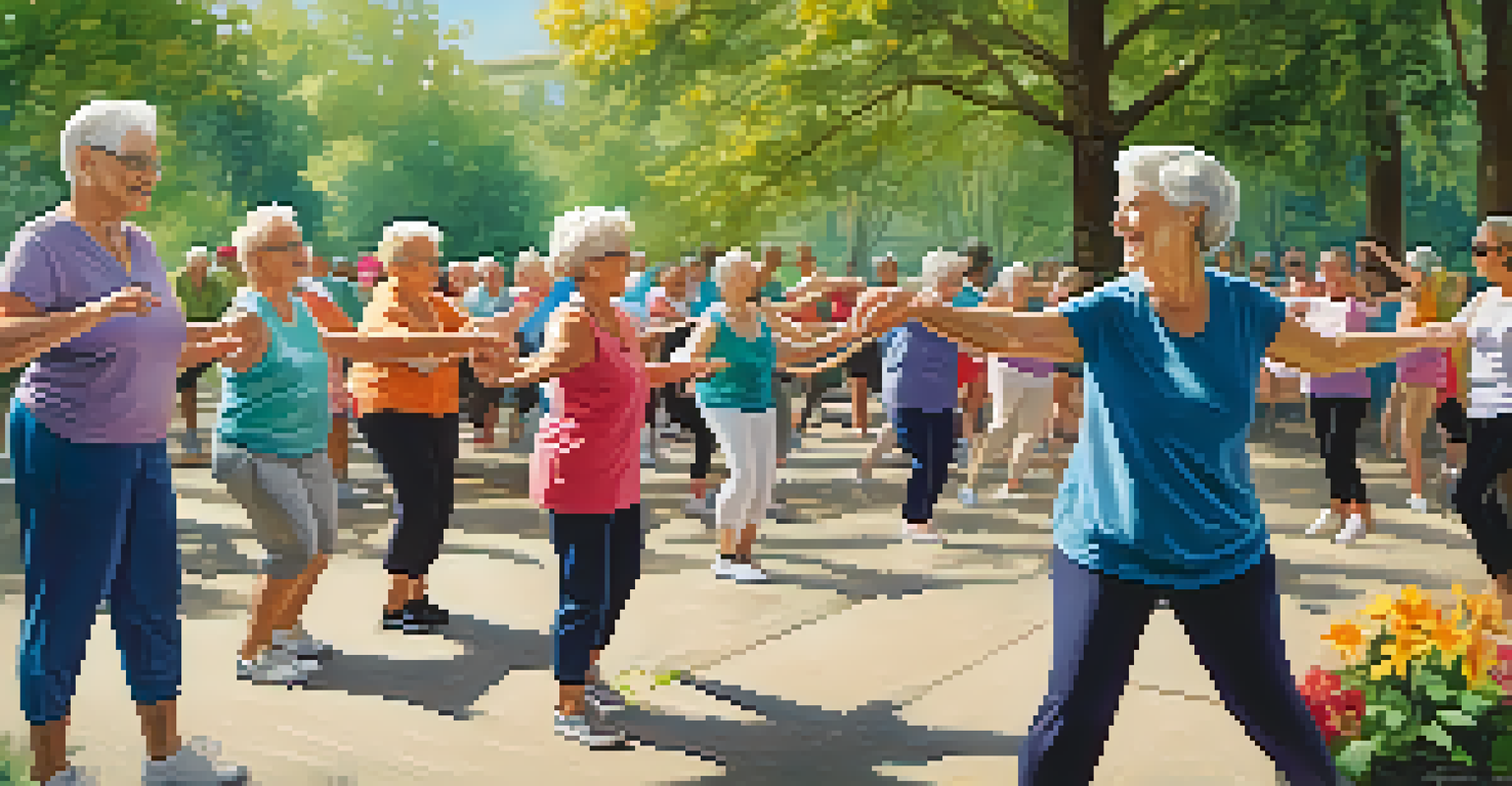The Science Behind Dance and Memory in Older Adults

Understanding the Link Between Dance and Brain Function
Dance isn't just a form of expression; it's a powerful tool for brain health. Engaging in dance activates multiple areas of the brain, promoting neuroplasticity—the brain's ability to adapt and reorganize itself. This is particularly beneficial for older adults who may experience cognitive decline as they age.
Dance is the hidden language of the soul.
Research shows that the rhythmic movements and coordination required in dance stimulate the hippocampus, a key area involved in memory formation. This stimulation can lead to improvements in both short-term and long-term memory, making dance a fun way to keep the mind sharp.
Moreover, dance encourages social interaction, which is another critical factor in maintaining cognitive function. The combination of physical movement and social engagement creates a multifaceted approach to enhancing memory that goes beyond traditional exercises.
The Role of Physical Activity in Cognitive Health
Physical activity is known to have a significant positive impact on cognitive health, especially in older adults. Regular exercise increases blood flow to the brain, delivering oxygen and nutrients essential for optimal function. Dance, in particular, is an enjoyable way to incorporate physical activity into daily life.

Studies have shown that older adults who engage in regular dance classes exhibit improved cognitive abilities compared to those who do not. This improvement can include better memory recall and enhanced problem-solving skills, helping seniors maintain their independence longer.
Dance Enhances Brain Health
Engaging in dance activates brain areas, promoting neuroplasticity and improving memory, especially in older adults.
Additionally, the physical benefits of dance, such as improved balance and coordination, can reduce the risk of falls—one of the major concerns for older adults. Therefore, dance serves a dual purpose of enhancing both physical and cognitive health.
Mindfulness and Memory: The Dance Connection
Mindfulness, a practice focused on being present, enhances mental clarity and memory retention. Dance inherently requires mindfulness, as dancers must concentrate on their movements, rhythm, and coordination. This focus can help improve memory by training the brain to be more attentive.
The body says what words cannot.
Incorporating mindfulness into dance routines allows older adults to engage fully with their bodies and minds. This holistic approach not only fosters a deeper connection to the music and movement but also aids in the retention of new information and memories.
By fostering a mindful state during dance, older adults can create a positive feedback loop where enhanced focus leads to improved memory and cognitive function. This connection highlights the multifaceted benefits of dance beyond mere physical exercise.
Social Engagement Through Dance and Its Benefits
Social interaction is crucial for mental health, particularly in older adults who may experience isolation. Dance classes provide an excellent opportunity for seniors to connect with others, fostering friendships and reducing feelings of loneliness. This social aspect is vital for mental well-being and cognitive function.
Many dance forms encourage group participation, creating a supportive environment where individuals can share experiences and build connections. The joy of dancing together can lead to increased motivation and enthusiasm for regular participation, further enhancing memory and cognitive health.
Physical Activity Boosts Cognition
Regular dance classes not only improve cognitive abilities but also enhance physical health, reducing fall risks for seniors.
These social bonds formed through dance contribute to a sense of community and belonging, which can boost overall happiness and cognitive resilience. Engaging with others while dancing not only enhances memory but also promotes emotional well-being.
Types of Dance Beneficial for Older Adults
There are numerous types of dance that can be particularly beneficial for older adults, from ballroom to line dancing to Zumba. Each style offers unique advantages, whether it’s the elegance of ballroom or the rhythm of salsa. Choosing a dance form that resonates personally can lead to greater enjoyment and commitment.
Line dancing, for example, is a great way to engage in group activity while also improving coordination and memory through repeated steps and patterns. On the other hand, ballroom dancing offers a combination of physical exercise and social interaction, making it a comprehensive option for seniors.
Ultimately, the best dance is the one that brings joy and fits the individual’s personality. By exploring different styles, older adults can find a dance form that not only enhances their memory but also enriches their lives.
The Science of Music: A Catalyst for Movement and Memory
Music plays a significant role in dance and has been shown to stimulate brain areas associated with memory. The right tunes can evoke emotions and memories, making the dance experience even more enriching. This connection between music and memory is particularly beneficial for older adults, as familiar songs can trigger vivid recollections.
Listening to music while dancing activates the brain's reward system, releasing dopamine—a neurotransmitter associated with pleasure and motivation. This not only makes dancing more enjoyable but also encourages regular participation, which is key to reaping the cognitive benefits.
Social Interaction Supports Memory
Dance classes foster social connections, which are essential for mental well-being and cognitive resilience in older adults.
Furthermore, the rhythms and melodies of music can help improve coordination and timing in dance, reinforcing memory through repetition and practice. The synergy between music and movement creates a powerful avenue for enhancing memory in older adults.
Creating a Dance Routine for Memory Enhancement
Developing a dance routine tailored for older adults can be a fun and effective way to enhance memory. Start with simple movements and gradually build complexity as confidence grows. Incorporating familiar songs can also help trigger memories, making the experience more meaningful.
Setting aside regular times for dance practice not only establishes a routine but also aids in reinforcing the memory of the steps learned. Encouraging social dancing with friends or family can further boost motivation and enjoyment, making it a delightful way to enhance cognitive health.

Lastly, remember that the goal is to have fun! Enjoying the process of learning and moving is just as important as the cognitive benefits gained. By creating a positive and engaging dance environment, older adults can enhance their memory while having a blast.